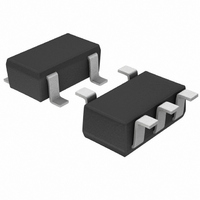BD7411G-TR Rohm Semiconductor, BD7411G-TR Datasheet - Page 25

BD7411G-TR
Manufacturer Part Number
BD7411G-TR
Description
IC OMNI DETECTION 5.5V SSOP-5
Manufacturer
Rohm Semiconductor
Type
Omnipolar Switchr
Series
-r
Specifications of BD7411G-TR
Sensing Range
±5.6mT Trip, ±1.5mT Release
Voltage - Supply
4.5 V ~ 5.5 V
Current - Supply
4mA
Current - Output (max)
±1mA
Output Type
Digital, Open Collector
Operating Temperature
-40°C ~ 85°C
Package / Case
6-LSOP (0.063", 1.6mm Width) 5 Leads
Hall Effect Type
Unipolar
Output Current
1mA
Power Dissipation Pd
540mW
Sensor Case Style
SSOP
No. Of Pins
5
Supply Voltage Range
4.5V To 5.5V
Operating Temperature Range
-40°C To +85°C
Svhc
No SVHC
Base Number
7411
Rohs Compliant
Yes
Features
-
Lead Free Status / RoHS Status
Lead free / RoHS Compliant
Features
-
Lead Free Status / Rohs Status
Lead free / RoHS Compliant
Available stocks
Company
Part Number
Manufacturer
Quantity
Price
Company:
Part Number:
BD7411G-TR
Manufacturer:
BOURNS
Quantity:
66 000
●Intermittent Operation at Power ON
●Magnet Selection
© 2010 ROHM Co., Ltd. All rights reserved.
BU52001GUL,BU52011HFV,BU52021HFV,BU52015GUL,BU52025G,BU52051NVX,
BU52053NVX,BU52054GWZ,BU52055GWZ,BU52056NVX,BU52061NVX,BD7411G
www.rohm.com
The bipolar detection Hall IC adopts an intermittent operation method in detecting the magnetic field during startup, as
shown in Fig. 69. It outputs to the appropriate terminal based on the detection result and maintains the output condition
during the standby period. The time from power ON until the end of the initial startup period is an indefinite interval, but it
cannot exceed the maximum period, 100ms. To accommodate the system design, the Hall IC output read should be
programmed within 100ms of power ON, but after the time allowed for the period ambient temperature and supply voltage.
※BD7411G don’t adopts an intermittent operation method.
Of the two representative varieties of permanent magnet, neodymium generally offers greater magnetic power per volume
than ferrite, thereby enabling the highest degree of miniaturization, Thus, neodymium is best suited for small equipment
applications. Fig. 70 shows the relation between the size (volume) of a neodymium magnet and magnetic flux density. The
graph plots the correlation between the distance (L) from three versions of a 4mm X 4mm cross-section neodymium magnet
(1mm, 2mm, and 3mm thick) and magnetic flux density. Fig. 71 shows Hall IC detection distance – a good guide for
determining the proper size and detection distance of the magnet. Based on the BU52011HFV, BU52015GUL operating
point max 5.0 mT, the minimum detection distance for the 1mm, 2mm and 3mm magnets would be 7.6mm, 9.22mm, and
10.4mm, respectively. To increase the magnet’s detection distance, either increase its thickness or sectional area.
Y
(Intermittentaction)
Magnet size
Supply current
10
(Magnetic
9
8
7
6
5
4
3
2
1
0
VDD
OUT
OUT
(No magnetic
field present)
field present)
0
Power ON
X
2
Startup time
X=Y=4mm
t=1mm,2mm,3mm
t=1mm
Indefinite
interval
Indefinite
interval
4
t
Fig.71 Magnet Dimensions and Flux Density Measuring Point
6
Magnet Hall IC distance L [mm]
7.6mm
8
Standby time
9.2mm
High
Fig.70
Low
t=3mm
10
25/31
10.4mm
Fig.69
L: Variable
Magnet
t=2mm
…Flux density measuring point
12
t
Startup time
14
Magnet material: NMX-44CH
Maker: Hitachi Metals.,LTD
16
18
Standby time
20
Technical Note
2010.12 - Rev.F












